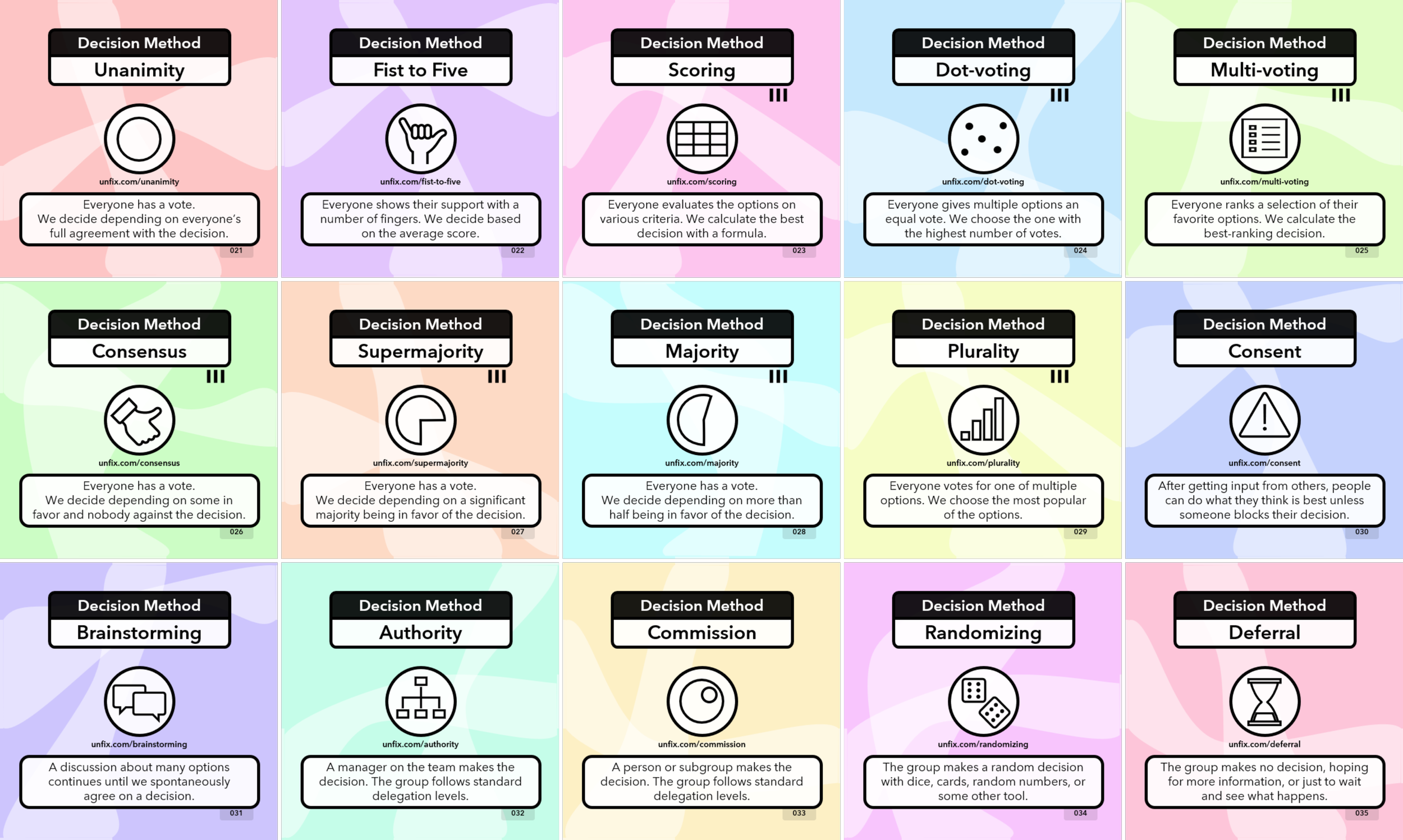I’m Always a Bit Hesitant About Voting
Author: Jurgen Appelo
I think democracy is important. I truly do. But every time people on a self-organizing team suggest voting about something, I tend to cringe, and I think, “Again? Do we need to? Is that the best option we have?”
We expect self-organizing teams to make decisions together, which often means they will need to vote on the issues they face. Voting on teams has many benefits:
Representation: Voting ensures that the outcome reflects the will of the team members, leading to decisions that are more aligned with people’s needs and values.
Voice: Voting is a mechanism through which team members express their preferences, grievances, and aspirations. It’s a key mechanism for holding each other accountable.
Duty: Voting strengthens democracy. By participating, team members uphold a responsibility central to the functioning of a democratic, self-organizing system.
Legitimacy: A high participation confers legitimacy to the results, making decisions more broadly acceptable even when the outcomes are not always desirable for everyone.
Cohesion: Voting can be a collective experience, fostering a sense of belonging, autonomy, and shared responsibility among the members of a team.
Education: The voting process requires that people stay informed about issues, options, and choices, which boosts the education and engagement of team members.
Change: Voting can bring about self-organized change, enabling shifts in power dynamics and introducing new team rules, policies, or even new team leaders.
Deterrence: Active team members can deter potential abuses of power, as leaders on the team know they are answerable to their team members.
Empowerment: Voting gives individuals a sense of empowerment, reinforcing the idea that they have a stake in their team’s future.
Rights: Voting may protect and promote individual rights, liberties, and the public interest.
On the other hand, there can also be some drawbacks to asking team members to vote on various matters in a self-organizing team.
Ignorance: Team members might have a shallow understanding of the issues, leading to decisions based on popularity or superficial factors.
Apathy: Some people argue that a single vote doesn’t matter much in the grand scheme of things, particularly on larger teams, which discourages participation.
Manipulation: Team member’s opinions can be swayed through deceptive campaigns or deliberate misinformation.
Oversimplification: Often, voting systems restrict choices to a limited number of options that only partially capture the full spectrum of choices or the nuances of opinions.
Politics: Rather than voting for their preferred options, team members might vote against their least preferred choices for strategic or political reasons.
Accessibility: Voting might be a hassle for some because of the required physical presence or mandatory authentication processes.
Fatigue: Human brains become mentally fatigued after making numerous decisions. Voter fatigue is a cause of abstention, resulting from people being asked to vote too often.
Short-termism: Teams might prioritize issues that resonate in the immediate future rather than long-term strategies, seeking quick fixes rather than lasting solutions.
Marginalization: Voting systems can lead to the neglect of minority needs, focusing instead on majority opinions and concerns.
Cost: Organizing decision-making and casting votes incurs infrastructure and administration costs and takes time away from other things that matter to team members.
Voting on self-organizing teams can be good, but you should be careful about how you organize the process, the things you all decide to vote on, and the frequency of voting.
"It’s rare for voters to devote several hours each week studying governance proposals and casting votes. In reality [...] decisions are usually made by a small number of token holders, which might not necessarily align with the interests of everyone. One way to increase participation is to simplify the voting system by limiting the frequency of votes and focusing on key decisions only." - How to DAO, Terry Winters
Voting is like water. It’s an essential ingredient for a healthy, social system; but useless and maybe even poisonous when used in large quantities.



